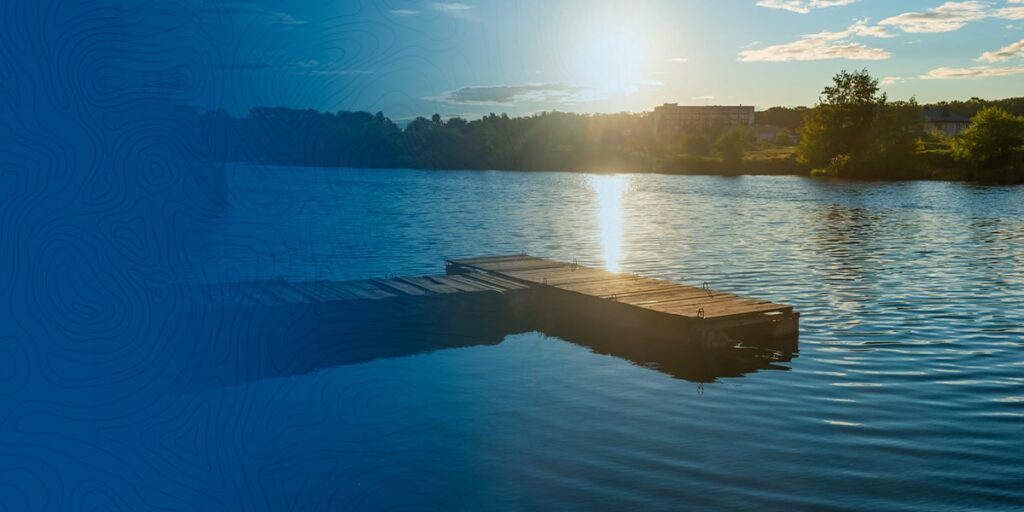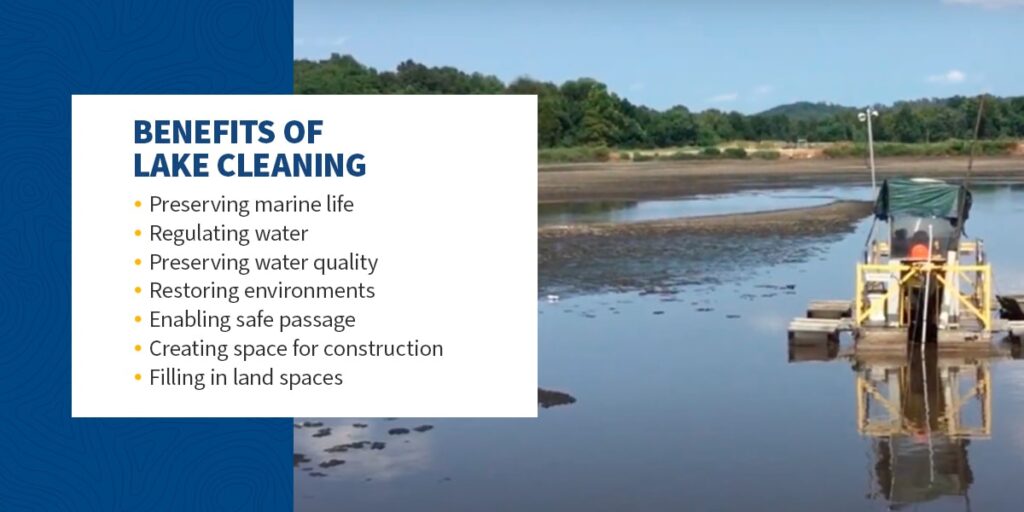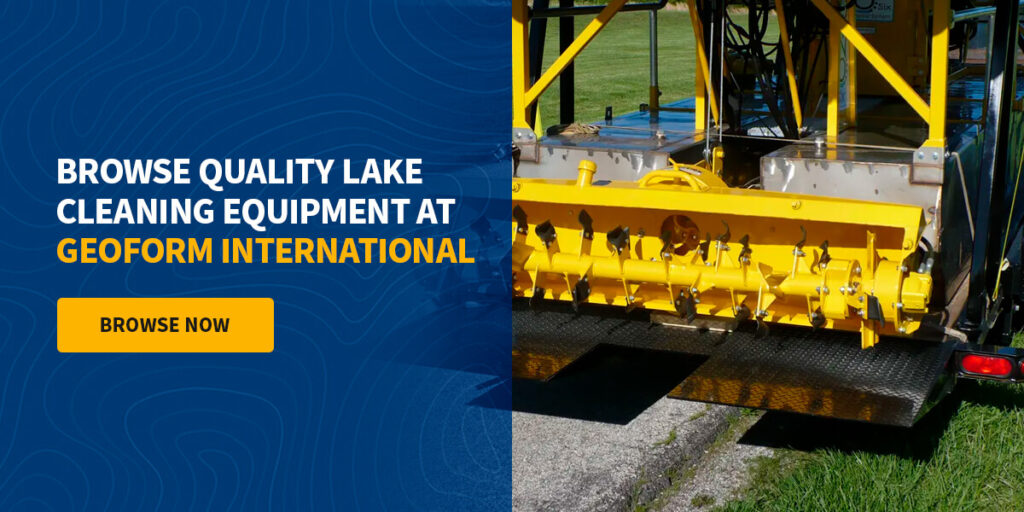Lakes are beautiful water sources that provide clear water for recreational purposes, consumption and aquatic ecosystems. Despite this, they can become murky and polluted from weeds, waste and sediment. Fortunately, you can clean your lake with various equipment and herbicides to keep its water pristine. Learn more with our quick guide below.
Benefits of Lake Cleaning
Cleaning water sources provides numerous advantages for landowners and businesses, such as:
- Preserving marine life: Periodic lake cleaning removes trash and debris or sediment, creating a healthier ecosystem for marine life and allowing them to flourish.
- Regulating water: Clean lakes help ease flood and drought impacts on a region. They store water, giving people access during shortages, and they increase water flow by removing sediment along the bottom. Water can flow freely, lessening the risk of floods.
- Preserving water quality: Lakes replenish groundwater sources. Clean lakes preserve the area’s water quality, biodiversity and habitat. Unclean lakes cause toxins to seep into the soil and pollute groundwater.
- Restoring environments: Removing sediment can reverse soil erosion and restore shorelines to their natural state.
- Enabling safe passage: Clean water sources provide safe, unobstructed passage for cargo vessels transporting raw materials, oil or other commodities.
- Creating space for construction: Sediment removal clears a path for waterway projects.
- Filling in land spaces: After professionals remove sediment, they use it to fill holes in the land.
How to Clean a Lake
Cleaning a lake involves removing weeds, debris and other pollution using equipment and herbicides. Learn how to keep a lake clean with weed management and pollution control.
Weed Management
It’s natural for lakes and ponds to have algae and weeds. These aquatic plants can benefit the ecosystem because fish can feed on them. Still, you must control weed and algae populations. An overgrowth can cause cloudy water and oxygen deprivation.
You can control aquatic plant population with the following:
- Pond dyes and shading: Pond dyes and other shading methods prevent sunlight from reaching your pond. Shading decreases the population of algae.
- Algae herbicides: Commercially available algae herbicides naturally break down the organism. You can follow the manufacturer’s instructions to treat your lake — only treat half at a time.
- Ultraviolet (UV) clarifiers: UV clarifiers release UV light, killing weeds. The UV light doesn’t harm fish and other wildlife. Note that UV clarifiers are inefficient for large lakes.
- Manual removal: Some algae resemble plants, so you can remove them by cutting, raking, vacuuming or pulling.
- Submerged weed control: The primary part of a submerged weed is below the water, even if the upper portion is above. Therefore, submerged weeds have soft stems. You can remove them by skimming, raking, cutting or pulling.
- Floating weed control: Floating weeds mainly occur in stagnant shallow lake water. Remove floating weeds by cutting them or using herbicides. Vacuuming and raking can remove smaller ones. You can prevent floating weeds from growing by increasing aeration and promoting water movement.
- Emergent weed control: Emergent weeds can grow in shallow water. You remove them by cutting, pulling or using herbicides.
Pollution Control
The Environmental Protection Agency found that almost 70,000 bodies of water nationwide don’t meet water quality standards. Polluted waters aren’t safe for humans or aquatic life. Lake pollutants come from pesticides, synthetic fertilizers, soil erosion, dams, runoff and storm sewers. You can combat lake pollution by:
- Preserving the natural vegetation around lakes.
- Maintaining septic systems and conducting regular inspections.
- Diverting stormwater runoff to the ground.
- Keeping yard waste out of storm drains, and off lakes and streets.
- Picking up and disposing of pet waste in the trash.
- Dredging the lake to remove sediment, trash, dead vegetation, sludge, sewage and other debris.
Learn More About Lake Dredging
Lake Cleaning Equipment
Without maintenance, pollution accumulates in lakes, causing them to be unsafe. You can adequately maintain your lake with the right equipment, keeping it fresh, clean and beautiful.
Dredges are the best lake cleaning equipment. They remove excess sediment from the bottom, sides and banks of lakes while preserving the water’s quality. Sedimentation causes many issues over time, including water depth reduction and contamination. After removing the sediment, workers transport it to another location to reuse it.
The Dino6 Dredge is excellent for lakes. It has many features and benefits, such as:
- Power: With 65 horsepower and a high-torque suction boom, the Dino6 enables you to clear large clumps of sediment faster than ever.
- Portability: You can transport it with a pickup truck and trailer.
- Flexibility: It can go where other dredges can’t, such as small lakes and tight spaces.
- Efficiency: The Dino6 is the most efficient dredging equipment. Its tank holds 30 gallons of fuel and only uses 3 gallons per hour.
- Easy to use: It’s as easy to use as possible. The operator lowers the boom to the bottom of the lake, the cutting bar’s teeth loosen the sediment, a vacuum sucks it up and you transport it to a disposal site.
Other types of lake cleaning equipment include:
- Aerators: Aerators circulate water to increase and stabilize the oxygen levels in your lake. Wind and heavy rain are natural aerators, but if they’re inconsistent, you can use mechanical aerators.
- Excavators: You can attach a bucket, grab or rake to an excavator. With an attachment, the excavator can skim the surface of your lake to remove sediment and debris.
- Weed harvesters: Weed harvesters help prevent aquatic vegetation from spreading. They’re similar to dredges, but they only remove weeds. The machine works like a lawn mower for water. It floats in the lake and cuts weeds and other aquatic plants. Once cut, the weeds move to a conveyor on the mower’s deck for storage.
- Aquatic skimmers: Aquatic skimmers remove surface and semi-submerged waste from your pond. It can remove algae, debris like plastic and litter, and liquid waste like oil and sewage.
- Lake rakes: Lake rakes harvest weeds on a small scale, such as residential ponds and lake cleaning. You throw the device into the lake and pull it back to shore. As it comes back, the rake’s teeth cut muck and weeds.
- De-icers: De-icers push warm water to the lake’s surface to prevent ice accumulation. Creating ice-free areas protects water structures and prevents ice damage.
Browse Quality Lake Cleaning Equipment at GeoForm International
All lakes benefit from dredging and maintenance. Dredging your lake is the best way to clean it and protect its ecosystem. It also provides us and aquatic life with clean, healthy water sources. You can’t dredge a lake without the right equipment. GeoForm International offers the highest quality lake-cleaning machines to meet your needs. Our equipment is efficient like no other, giving you a clean lake sooner.
Learn more about our powerful and compact Dino6 Dredge, or contact us today to see how our machines and lake cleaning services can help you.



